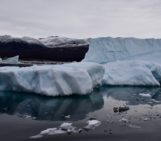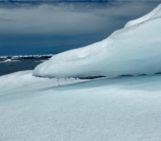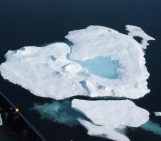
Forked lightning casts an orange glow over the landscape [Photo by Jorge Mataix-Solera at imaggeo.egu.eu]
What is lightning?
Lightning is caused by a difference in electrical charge between the cloud and the air, nearby clouds, or the ground (see image below). It can get really hectic inside a Cumulonimbus, or thunder cloud. During cloud formation, water droplets are forced to rise and fall in up- and downdrafts, bumping into each other as they move. As they collide, they exchange electrons. Hail, or larger heavy ice crystals, fall to the base of the cloud, which gives this base an overall negative charge. As opposites attract, the negative charge is attracted to positive ones, which could be other clouds, the air, or the ground. When the potential difference (attraction) becomes large enough, the negative charge rushes to the positive atoms! Then, electrons can shoot towards the ground at 435,000 kilometers per hour (270,000 miles per hour) and BOOM! In 2003, Christian and colleagues found this to cause around 1.4 billion lightning strikes every year across the globe.
Why is lightning less common in the Arctic?
It takes a lot of heat and moisture to build tall enough clouds, with huge updrafts, in order to create such a large electrical charge. Therefore, lightning is most common in the tropical regions, or on hot summer days, when there is a lot of energy from warm oceans and land. However, lightning can still occur in the Arctic: in polar summer, when 24 hours of sunshine can heat the oceans and land enough to form thunder and lightning clouds. The Arctic is heating three times faster than the global average and more ocean and land is becoming exposed as the ice melts. This means there’s more moisture available and greater potential for lightning strikes.

This scheme shows, how water droplets in cloud experience a lot of movement as they rise and fall. When they freeze into snow and hail particles, they sink to the bottom of the cloud, negatively charged. As opposites attract to create balance, sudden discharge in form of a lightning bolt directs towards any positively charged surface, such as the ground [Photo and scheme by Maria Scheel].
Is lightning becoming more common?
A recent report by Vaisala found that there were 7278 lightning strikes in 2021– almost twice as many strikes as recorded over the previous nine years combined! In the high Arctic, north of 80°, the increase in lightning strikes has been dramatic. A recent study by Chen and colleagues estimates that with every 1°C rise in global average surface temperatures, the risk of lightning strikes in the Arctic will increase by 25%.
What’s the problem?
Whilst lightning storms make for fantastic viewing and photography, they also cause big problems in the Arctic. When the strike touches down on tundra or vegetation, especially if it is dry after intensely warm summer seasons, it can create wildfires. The wildfires of 2020 which occurred across Europe and North America were initiated by lightning strikes. There are also approximately four million people living on the land bordering the Arctic Ocean. Whilst the probability of being hit by lightning is still low in these regions, these populations have not had to consider this risk previously.
Therefore, increased Arctic lightning strikes are another point on the long list of potential climate change impacts!
Further reading:
- Global lightning frequency study
- Arctic Council on Arctic warming rates
- Vaisala report on increased lightning frequencies
- About the 2021 wildfires
- How Arctic lightning might but permafrost carbon at risk
- Stay up to date with topics related to the Arctic population
Edited by Maria Scheel
 Jenny Turton is a senior science advisor for Arctic Frontiers, a non-profit organisation focusing on bringing together scientists, local communities, stakeholders, and businesses to discuss Arctic issues. She tweets from @TurtonJ1990.
Jenny Turton is a senior science advisor for Arctic Frontiers, a non-profit organisation focusing on bringing together scientists, local communities, stakeholders, and businesses to discuss Arctic issues. She tweets from @TurtonJ1990.




